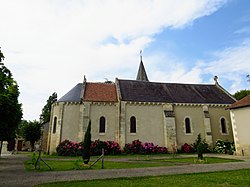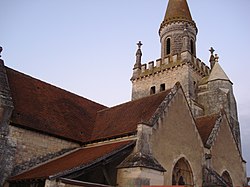Lavoux
Communes of ViennePages with French IPAVienne geography stubs
Lavoux (French pronunciation: [lavu]) is a commune in the Vienne department in the Nouvelle-Aquitaine region in western France.
Excerpt from the Wikipedia article Lavoux (License: CC BY-SA 3.0, Authors).Lavoux
Rue de l'Église, Poitiers
Geographical coordinates (GPS) Address Nearby Places Show on map
Geographical coordinates (GPS)
| Latitude | Longitude |
|---|---|
| N 46.5964 ° | E 0.5303 ° |
Address
Église Saint-Martin
Rue de l'Église
86800 Poitiers
Nouvelle-Aquitaine, France
Open on Google Maps





